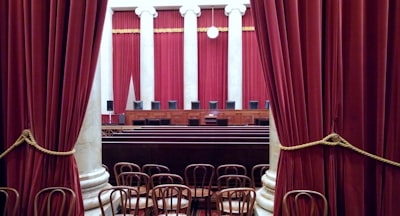Summary:
On July 8, 2025, the U.S. Supreme Court issued a critical decision clearing the way for President Donald Trump to pursue sweeping federal layoffs and agency downsizing. The ruling lifted a lower court block on mass terminations, allowing the administration to press forward with restructuring efforts across numerous agencies, including State, Treasury, Health and Human Services, and more. The order is a significant boon for Trump’s push to consolidate executive power and reduce the size of the federal bureaucracy, with the potential for hundreds of thousands of jobs to be cut. However, actual implementation could still be delayed by other legal challenges, union resistance, and statutory protections for civil servants.
Analysis:
The Supreme Court’s decision underscores two powerful, intersecting trends in American governance: the increasing strength of the executive branch and the politicization of federal workforce management. By siding with the President’s executive order—even before full litigation concludes—the court signals deference to presidential authority over agency personnel. This outcome may encourage not just Trump, but future presidents, to pursue more aggressive reorganizations, potentially bypassing Congress’s traditional role in shaping and funding federal agencies.
Politically, the measure divides sharply along partisan lines, as reflected by polling and public statements. Republicans overwhelmingly support downsizing what they perceive as an inefficient and overreaching bureaucracy, while Democrats fear chaos, loss of public service capacity, and unchecked executive power. Concerns about process are also front and center: layoffs are happening rapidly, with deep involvement of private-sector actors like Elon Musk, raising questions about institutional continuity and the risk of operational failures in agencies delivering critical public functions.
Ethically and socially, the ramifications could be severe. Layoffs affecting hundreds of thousands of civil servants can destabilize communities, undermine important services (such as Social Security processing or veterans’ benefits), and erode morale in public administration. The critique from unions and some justices—especially Ketanji Brown Jackson’s dissent—warns against hasty or ideologically driven purges that might undermine long-standing democratic norms and protections.
Discussion:
This episode is a vivid illustration of the long-standing debate over the role, size, and function of the federal government. Similar attempts at government downsizing have occurred in moments of political upheaval, from Reagan-era rhetoric to attempts at civil service reform under various administrations. What sets the current situation apart is the pace, scale, and the Supreme Court’s willingness to use emergency orders—the so-called "shadow docket"—to enable major executive actions absent robust debate or full judicial scrutiny.
The involvement of business leaders like Elon Musk signals a new style of governance, blending Silicon Valley’s disruption ethos with the machinery of state. This presents both opportunities (potential efficiency gains) and dangers (loss of institutional knowledge, short-termism, and susceptibility to private interests).
Critical questions remain: Will service disruptions undermine public trust in government? Can legal and institutional safeguards protect career civil servants from excessive political interference? Is this a temporary correction, or the start of a transformative shift toward presidential dominance and a leaner government?
Ultimately, the stakes are immense—not just for those facing job loss, but for Americans who rely on federal agencies daily. As litigation and political battles continue, this moment will likely be seen as a turning point in the ongoing struggle over who governs, how, and in whose interests.

Comments
No comments yet. Be the first to comment!